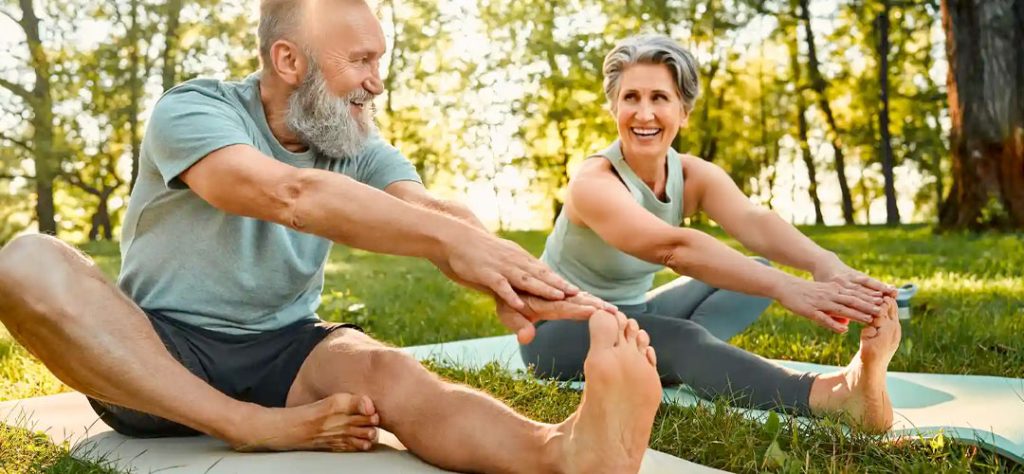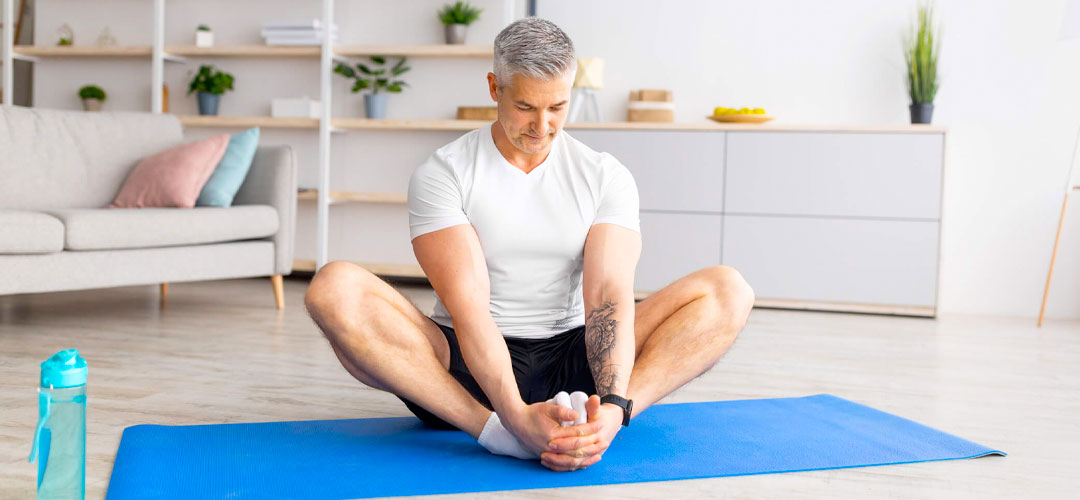As we grow older, it’s easy to accept aches, stiffness, and reduced mobility as inevitable.
But what if a few minutes of daily movement could help you feel lighter, looser, and more energised?
That’s the power of stretching. Incorporating regular stretching into your routine is one of the most effective ways to stay flexible as you age, support joint health, improve posture, and reduce your risk of injury.
In this guide, we’ll explore the benefits of stretching, how flexibility changes with age, and simple ways to add stretching to your lifestyle—no matter your current fitness level.
Why Does Flexibility Decline With Age?
As we age, our muscles naturally lose elasticity, and connective tissues like tendons and ligaments become stiffer. This can lead to:
- Reduced range of motion
- Muscle tightness and joint stiffness
- Poor posture and balance
- Increased risk of falls or injury
These changes often start subtly in our 30s or 40s and become more noticeable over time. However, stretching for flexibility in later life can significantly slow down or even reverse these effects, helping you stay active, independent, and pain-free.
Key Benefits of Stretching as You Get Older
Whether you’re in your 40s, 60s, or beyond, stretching offers numerous physical and mental health benefits. Here’s why it matters:
1.Improves Flexibility and Range of Motion
Regular stretching lengthens muscles and improves joint mobility, making everyday movements—like reaching, bending, or turning—much easier.
2.Reduces Stiffness and Aches
Gentle, consistent movement helps lubricate joints and reduce muscle tightness, particularly in areas like the lower back, hips, and shoulders.
3.Supports Posture and Balance
Stretching improves alignment, especially if you sit for long periods. Better posture helps reduce back and neck pain while improving your overall appearance.
4.Enhances Circulation and Recovery
Stretching increases blood flow to muscles, aiding in recovery from physical activity and promoting tissue repair.
5.Supports Mental Wellbeing
Mindful stretching calms the nervous system and reduces stress. Many people find it relaxing, grounding, and beneficial for sleep.
How to Stretch Safely: Tips for All Ages
You don’t need to be an athlete or yoga enthusiast to benefit from stretching. The key is to be consistent and work within your limits. Here are some expert tips for safe and effective stretching:
- Warm up first: Stretch after a light walk, warm shower, or gentle activity. Never stretch cold muscles.
- Stretch slowly and gently: Move into each stretch gradually. Avoid bouncing or jerky movements.
- Hold for 15–30 seconds: Breathe deeply and relax into the stretch. Don’t force your body.
- Avoid pain: You should feel a gentle pull, not sharp discomfort.
- Be consistent: Aim for 3–5 times a week, or daily if possible.
Best Stretches for Ageing Gracefully
Focusing on key muscle groups that tend to tighten with age can help you move more freely. Try incorporating these simple stretches:
1.Neck and Shoulder Rolls
Relieve tension from desk work or screen use. Slowly roll your shoulders and neck in circles to release stiffness.
2.Chest and Upper Back Stretch
Open up the chest by clasping hands behind your back and gently lifting. Counteracts slouching and improves posture.
3.Hamstring and Calf Stretch
Tight hamstrings can lead to lower back pain. Try seated or standing hamstring stretches to maintain leg flexibility.
4.Hip Flexor Stretch
Stretching the hips improves walking posture and reduces pressure on the lower spine.
5.Cat-Cow Movement
A gentle, flowing movement to warm up the spine, release tension, and improve mobility.
6.Seated Forward Fold
A safe way to stretch the back and legs, especially if standing movements are uncomfortable.
Stretching, Supplements, and Joint Health
Stretching is a powerful tool, but your flexibility also depends on joint and connective tissue health. Certain natural food supplements for joint support and flexibility can enhance your stretching routine:
- Glucosamine and chondroitin: Support cartilage and joint cushioning
- MSM (Methylsulfonylmethane): May help reduce inflammation and improve joint mobility
- Collagen: Provides structural support to joints, ligaments, and muscles
- Magnesium: Supports muscle relaxation and prevents cramps or tightness
- Turmeric or curcumin: Natural anti-inflammatory to ease stiffness and support joint comfort
Incorporating high-quality supplements with a stretching routine can create a powerful synergy for staying mobile and flexible as you age.

Staying Flexible for Life
You’re never too old—or too stiff—to start stretching. Whether your goal is to reduce joint pain, improve posture, or simply feel more comfortable in your body, stretching is one of the easiest and most effective habits to support graceful ageing.
By adding just 10–15 minutes of stretching to your day, you can:
- Feel more energised and mobile
- Improve circulation and muscle recovery
- Reduce tension and pain
- Support long-term joint and musculoskeletal health






